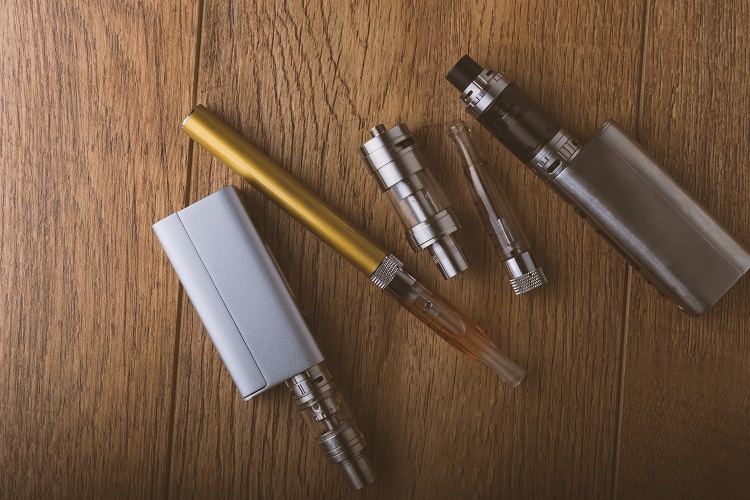What is vaping and JUULing?
Vaping, also known as JUULing, is becoming more popular with youth in middle school and high school. Vaping means using an electronic cigarette (e-cigarette) or other vaping device. It is referred to as vaping because tiny puffs or clouds of vapor are produced when using the devices. E-cigarettes are battery powered and deliver nicotine through a liquid (called e-juice), which turns into a vapor when using the devices. The liquid comes in flavors, such as mint, fruit, and bubble gum, which appeal to kids. Youth often believe that the liquid used in vaping only contains water and flavoring and are unaware that it contains nicotine. Therefore, they may think vaping is less dangerous than using other tobacco products, such as cigarettes. The amount of nicotine in the liquid can be the same or even more than the amount found in cigarettes.
Many types of e-cigarettes are available, but one popular brand is JUUL. JUUL is becoming more prevalent with youth in middle and high school because of its small size, and it looks like a USB device. When using a JUUL it is often referred to as JUULing.
Vaping and JUULing are not safe for kids.
Most e-cigarettes contain nicotine, and no amount of nicotine is safe. Nicotine is very addictive and can harm children and teens’ developing brains. Using nicotine can cause problems with learning and attention and can lead to addiction. Even being around others who use e-cigarettes and breathing the cloud they exhale can expose youth to nicotine and chemicals that can be dangerous to their health. Studies have also shown that kids who vape are more likely to use cigarettes or other tobacco products later in life.
What can parents do?
It is important to talk with kids about the dangers of vaping. Youth see e-cigarette advertisements from many sources, including retail stores, the internet, TV, movies, magazines, and newspapers. They can also see posts or photos about vaping on social media. Parents should monitor screen time use and talk to their youth about what they may have seen or heard about vaping. Parents can also be role models and set a positive example by being tobacco free.
Resources for Parents:
Centers for Disease Control and Prevention. Office on Smoking and Health. (n.d.) Talk with Your Teen About E-cigarettes: A Tip Sheet for Parents. Retrieved from
https://e-cigarettes.surgeongeneral.gov/documents/SGR_ECig_ParentTipSheet_508.pdf
CATCH My Breath Program. (n.d.) Parent Resources. Retrieved from https://catch.org/lessons/catch-my-breath-middle-school-parent-resources
Additional References:
U.S. Food and Drug Administration. (2018) Youth Tobacco Use: Results from the 2016 National Youth Tobacco Survey. Retrieved from
https://www.fda.gov/TobaccoProducts/PublicHealthEducation/ProtectingKidsfromTobacco/ucm405173.htm
Centers for Disease Control and Prevention. (2017) E-cigarette Ads and Youth. Retrieved from https://www.cdc.gov/vitalsigns/ecigarette-ads/index.html




